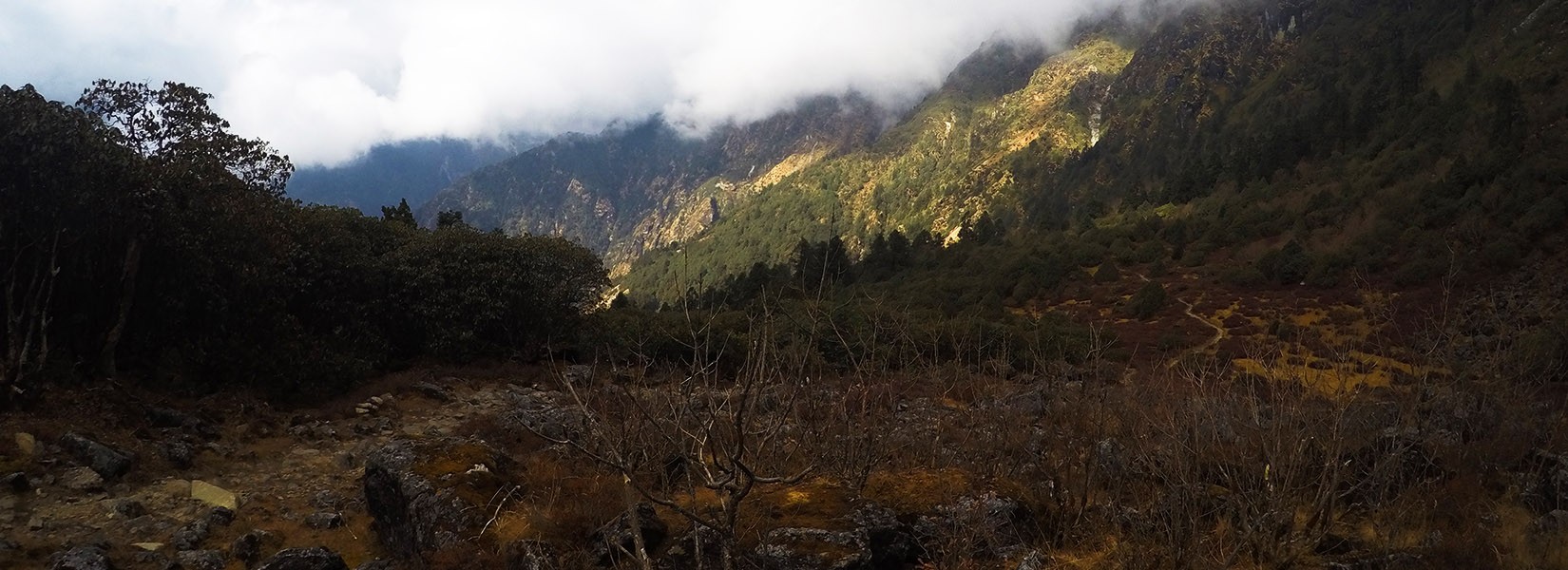Tips & Ideas
Best Trekking Seasons:
Spring (March–May): Clear skies, blooming rhododendrons, pleasant temperatures.
Autumn (September–November): Best visibility and stable weather.
Trek Difficulty: Moderate – daily walking 4–7 hours. Suitable for beginners with average fitness.
Altitude Sickness: Maximum altitude is 3,650m (Thadepati). AMS risk is low but trekking steadily and hydrating well is recommended.
Accommodation: Basic tea houses with shared bathrooms; Kathmandu hotels with modern amenities.
Food: Dal Bhat (rice and lentils), noodles, momos, soups, and simple Western dishes.
Water: Available in lodges; bring purification tablets or reusable bottles.
Packing Essentials: Layered clothing, warm jacket, trekking boots, rain gear, sun protection, sleeping bag.
Frequently Asked Questions (FAQs) – Helambu Trek
1. How fit do I need to be for this trek?
A good general fitness level is enough. Regular walking, jogging, or light hiking preparation is recommended.
2. What is the maximum altitude reached?
The highest point is Thadepati Pass (3,650m / 11,975ft).
3. Can beginners join this trek?
Yes, the Helambu Trek is ideal for beginners or families as it is shorter and less physically demanding.
4. Do I need to hire a porter?
Hiring a porter is optional. If you prefer trekking light, we recommend hiring one.
5. Is the Helambu Trek crowded?
No. Compared to Everest and Annapurna regions, Helambu is relatively quiet and peaceful.
6. What cultural experiences can I expect?
You will witness Sherpa and Tamang culture, Buddhist monasteries, prayer flags, and traditional Himalayan farming lifestyles
7. How many hours do we walk each day?
On average, you will walk 4–7 hours per day depending on the terrain and your pace. The trails include a mix of uphill, downhill, and flat sections.
8. What is the accommodation like on the trek?
Accommodation is in local tea houses, which provide basic twin-sharing rooms with simple beds, blankets, and pillows. Bathrooms are mostly shared, and hot showers may be available for an extra charge.
9. What food is available during the trek?
Meals are served in tea houses. The menu usually includes Dal Bhat (rice and lentils), noodles, pasta, momos, soups, bread, eggs, and tea/coffee. While the variety is limited compared to Kathmandu, the meals are filling and nutritious.
10. Is drinking water safe?
Bottled water and boiled water are available at tea houses. However, we recommend bringing water purification tablets or a reusable filter bottle to save cost and reduce plastic waste.
11. Do I need trekking permits for Helambu Trek?
Yes, two permits are required:
12. Do I need a guide or porter?
While it’s possible to trek independently, hiring a licensed trekking guide ensures safety, navigation, and cultural insights. Porters are optional but highly recommended if you prefer trekking light.
13. What is the best time to do the Helambu Trek?
The best seasons are:
Spring (March–May): Warm weather, rhododendrons in bloom.
Autumn (September–November): Clear skies, excellent mountain views.
Winter (Dec–Feb) is cold but doable. Summer (Jun–Aug) has heavy monsoon rains and is less ideal.
14. Is altitude sickness a concern on this trek?
The trek’s maximum altitude is 3,650m (Thadepati). This is below the high-risk zone for altitude sickness, but symptoms can still occur. Walk slowly, stay hydrated, and listen to your guide.
15. Is travel insurance necessary?
Yes. Travel insurance covering emergency evacuation and medical costs is strongly recommended for trekking in Nepal.
16. What should I budget for tips?
Tipping is a common practice in Nepal. Generally:
17. Can I charge my electronic devices during the trek?
Yes, most tea houses offer charging facilities for a small fee. Carrying a power bank is recommended.
18. Is Wi-Fi available?
Some tea houses offer Wi-Fi (paid), but the connection can be slow and unreliable in higher villages.
19. How crowded is the Helambu Trek?
The Helambu trek is less crowded than Everest or Annapurna treks, which makes it a peaceful choice for those seeking an authentic Himalayan experience.
20. Is the Helambu Trek suitable for families?
Yes, this trek is moderate and suitable for families with children who enjoy walking. It’s also a great option for those on a shorter holiday.
Essential Equipment & Packing List for Helambu Trek
Packing wisely ensures comfort and safety. Here’s a recommended list:
Clothing
Lightweight trekking shirts (2–3)
Thermal base layers (top & bottom)
Fleece or down jacket (for cold mornings/evenings)
Waterproof/windproof jacket
Trekking trousers (2 pairs)
Lightweight shorts (optional)
Warm hat/beanie
Sun hat or cap
Gloves (warm pair + light pair)
Trekking socks (3–4 pairs)
Comfortable underwear
Footwear
Backpack & Sleeping
Daypack (25–35L) with rain cover
Duffle bag (if porter-assisted)
Sleeping bag (3-season, -10°C recommended)
Sleeping bag liner (optional for hygiene)
Accessories
Sunglasses with UV protection
Trekking poles (highly recommended for descents)
Headlamp with extra batteries
Reusable water bottles (1–2 liters) or hydration bladder
Water purification tablets/filter bottle
Power bank/solar charger
Camera/phone for photos
Personal Items
Quick-dry towel
Toiletries (toothbrush, toothpaste, biodegradable soap, wet wipes, tissue paper)
Sunscreen (SPF 30+)
Lip balm with SPF
Insect repellent
Hand sanitizer
First Aid & Medications
Personal first aid kit (band-aids, blister care, antiseptic cream)
Pain relievers (paracetamol/ibuprofen)
Anti-diarrheal medicine
Diamox (for altitude, consult doctor before use)
Prescription medications (if any)
Documents & Money
Passport with valid visa
Trekking permits (provided by guide/agency)
Travel insurance copy
Cash in Nepali Rupees (for snacks, tips, Wi-Fi, charging)
